Falling in love with nature through journaling
Ever since I was a little girl, I have loved nature. Some of my earliest memories involve being fascinated by all the things I saw in nature—a carpet of goldfields, a hummingbird visiting the sage bush in our garden, the new green leaves of the California Buckeye, and the little boats I made out of leaves and sailed down the creek near my house. When I was about 8, I went on a backpacking trip with my family to a lake and I remember spending all afternoon building a little house out of bark and flowers and acorn caps for my favorite stuffed animal. I loved to stand by the lake and watch the frogs sitting in the algae on the surface and see the wind making ripples across the water. My elementary school included plenty of nature as part of the education. I spent a lot of time playing in the mud, collecting brightly colored leaves, hiking with my class and looking in wonder at the patterns of the frost on the classroom windows in the winter. And though I am older now, I still feel like that child, fascinated by the sparkles of rain on a spider web and the smell of the air after it rains. Nature is still one of my favorite places to be.
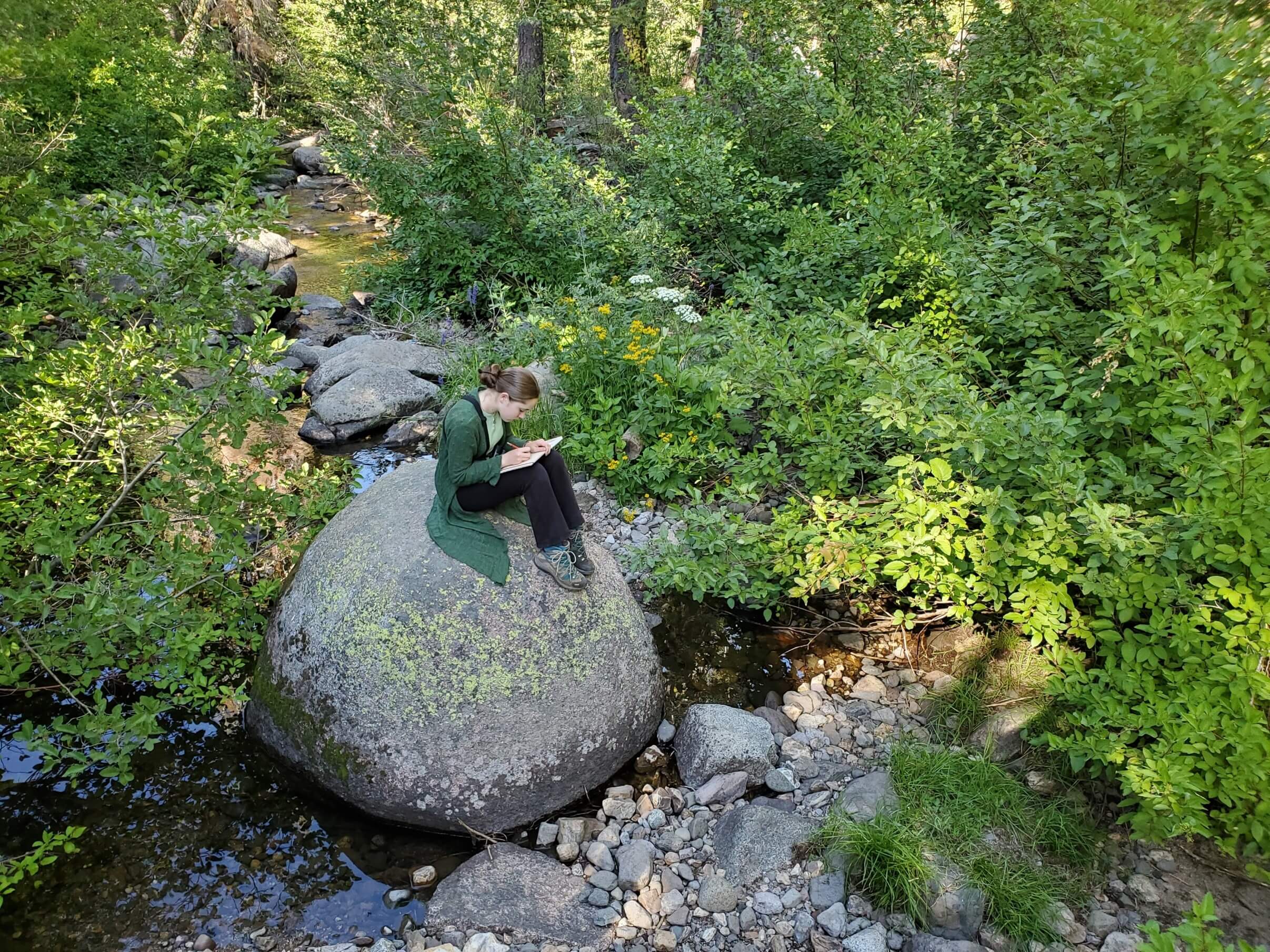
Fiona sketching wildflowers in the Sierra Nevada mountains.
Drawing is also something that I love. I started drawing at a very young age and I have been an avid sketcher for almost my whole life. When I was very little, I would draw fairies and gnomes and mermaids from my imagination and make up stories for them. I always took colored pencils with me wherever I went. When I got a bit older, I started to draw from life. I drew everything: landscapes, the lavender bush below the kitchen window, a portrait of my favorite pet chicken, maps of my local trails and the first apricot from our tree.
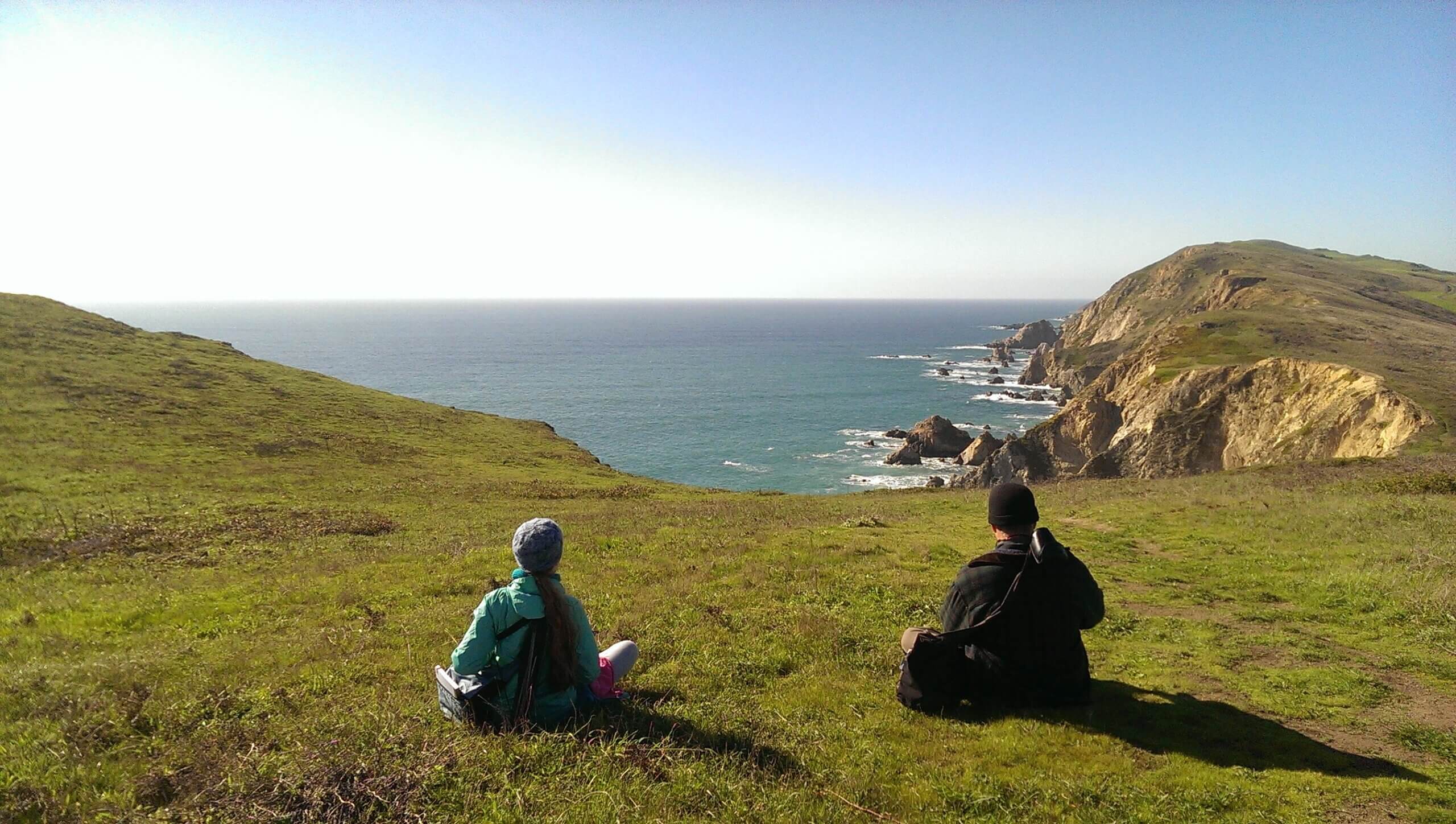
Fiona and her mentor, John Muir Laws, nature journaling at Point Reyes National Seashore.
When I was thirteen, I had a chance meeting with author, artist, educator and naturalist John Muir Laws. He introduced me to nature journaling and my life was forever changed. Nature journaling is taking a notebook and some simple art supplies out into nature and using words, pictures and numbers to describe what you notice, what you wonder about and what things remind you of. What really drew me to nature journaling is that it combines two of my favorite things: art and nature. After meeting John Muir Laws, I immediately started my first nature journal and began to fill it with sketches and notes about the many wonders of nature that I saw around me. Since my thirteenth birthday, nearly five years ago, I have created more than two thousand journal pages—filled with sketches, diagrams, maps, paintings, observations and questions.
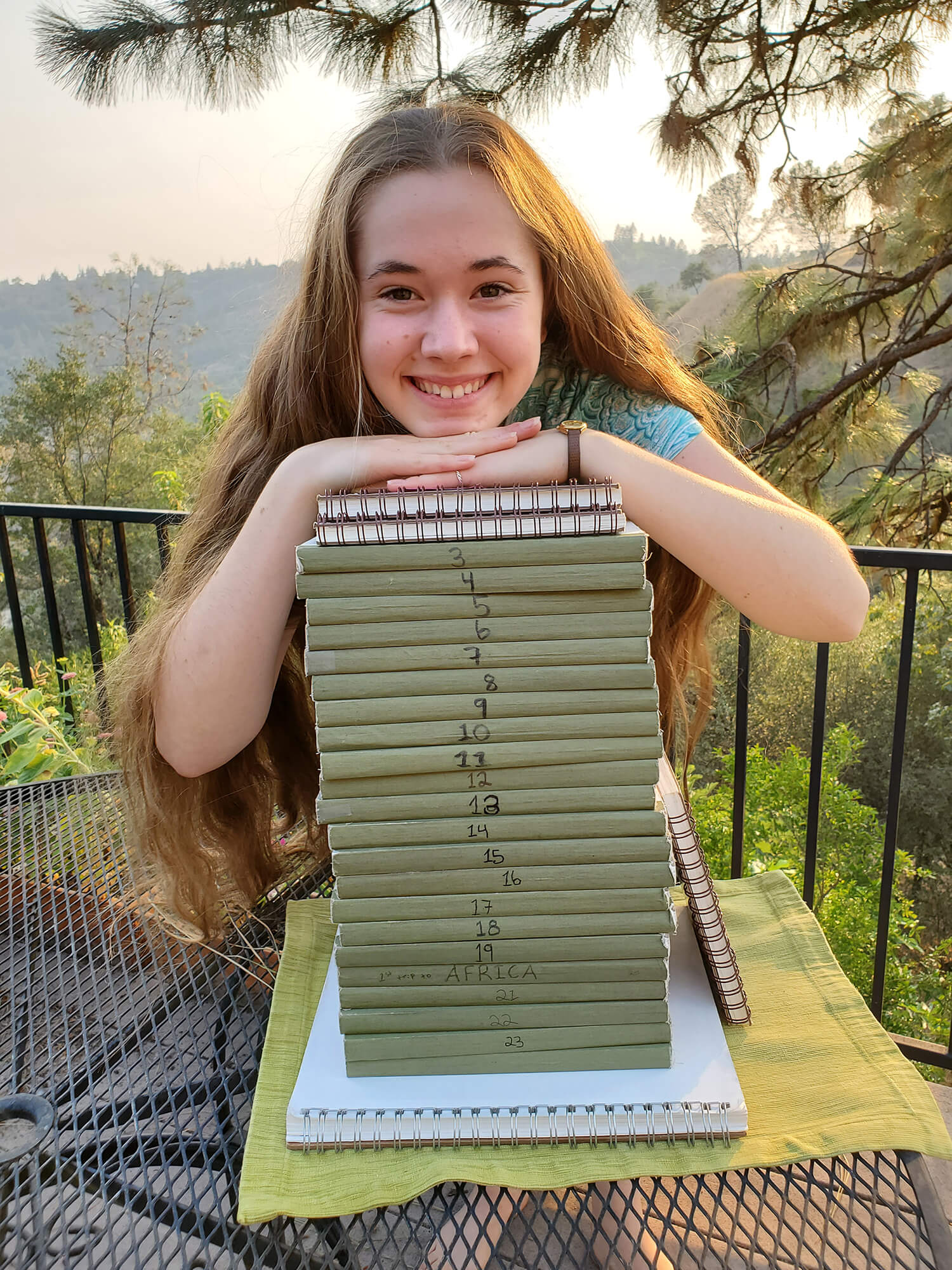
Fiona has created more than 2,000 nature journal pages since 2016.
WHY KEEP A NATURE JOURNAL?
Nature journaling is an amazing way to connect with the natural world. I find that when I journal, I lose track of time and get swept up in whatever it is that I am drawing and wondering about. I focus for much longer when I am journaling because I have to look again and again while I’m drawing. Keeping a nature journal helps me remember more of what I see in nature and it is a lot of fun. Research shows that when we draw and write, we remember more. I have definitely found this to be true: when I look back at my journal, I can go right back to that day and vividly remember where I was. It’s incredible the way just making a sketch or writing something down can help you remember that experience months or even years afterwards.
When I journal, I notice more, and the more I notice, the more fun it gets. Let’s say I’m drawing a wildflower: I have to look at it very closely and by doing that, I might notice something interesting about how the petals attach. That might spark a question that gets me very excited and curious about this little flower. I wouldn’t have gotten so excited about it if I hadn’t stopped to wonder about it. Journaling also helps me to articulate my thoughts and questions on paper. Once I write down what I am thinking, I no longer have to keep holding that thought in my mind and then my mind is free to think of more things. This also allows me to look at my thoughts and questions on paper and make connections between them. This practice of journaling has benefited me in other parts of my life as well. I recently took an honors botany class where we did a lot of careful drawing and learning about the plants through artistic observation. Since I had spent so much of my time doing just that, this class was so much fun for me to attend.

Fiona illustrates a Leopard Lily and a spider visiting her chicken yard, June 2020.© Fiona Gillogly
HOW TO GET STARTED
Nature journaling is open to everyone regardless of age, location or experience. A little grey bird in your backyard can be just as interesting to watch as any rare or “special” bird. You can be just as fascinated with a little clover flower on your front lawn as you would be with a plant in Yosemite Valley. There is no one right way to keep a nature journal and everyone has different materials, different strengths and different styles. These are some of the things I use and how I journal, but I want to invite you to feel free to do this in whatever way feels comfortable for you. If you are out enjoying nature and having fun in your journal, you’re doing it right.

Fiona shares observations about Great-horned Owl pellets, August 2020.© Fiona Gillogly.
My kit for journaling is fairly simple and I keep it all together in a lightweight bag hanging by the front door so it is easy to take with me whenever I head out on a nature adventure. I have a hardcover journal with thick paper and an assortment of pencils, brushes and pens, as well as a watercolor palette. I also have a lightweight pair of small binoculars that work for birding but also have a short focal length and enable me to closely study flowers and bugs. One of my favorite tools is a non-photo blue pencil. This pencil is very pale, and I use it to block out the general shapes of what I’m drawing. Since it is so pale, it is easy to stay loose with the drawing and change the lines if I want. Once I’ve got a shape I like, I move to a mechanical graphite pencil and go over the lines that I want to keep. Then I will usually paint what I drew and give the page a title. Next, I add some metadata in a little box, which includes where I am, what the weather is like and the date. Finally, I start writing down my observations and questions.
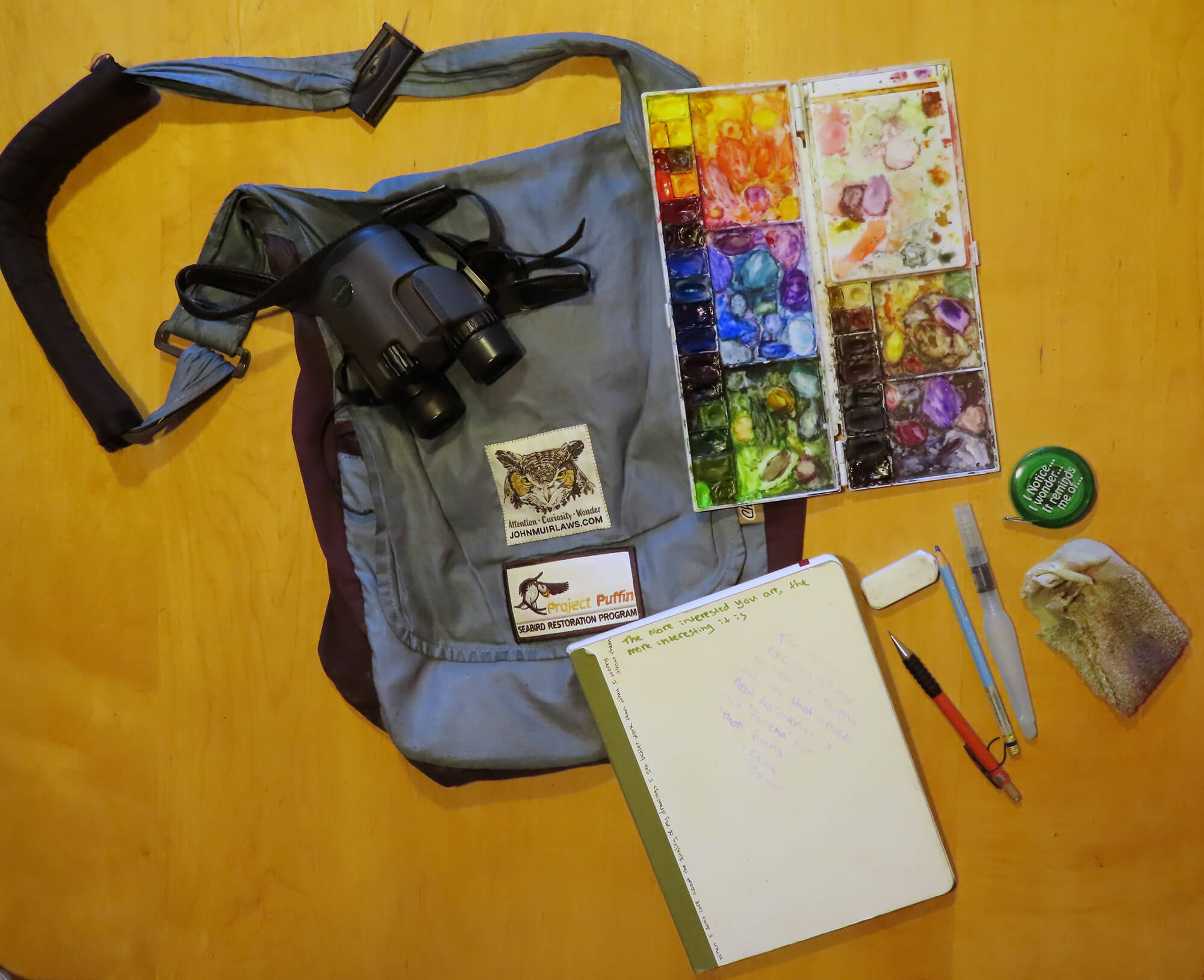
Fiona’s nature journal kit.
One of my favorite parts of journaling is the joy of curiosity. It is so much fun to slow down, look closely, start wondering about something and fill my page with questions. And research shows that the act of getting curious helps pull me into a state of heightened awareness and focus, priming me to notice and learn more. I will often start with really simple questions. I have noticed that when I begin with simple questions, and keep asking questions, I find my way to more interesting and complex questions. In that moment, I don’t worry about finding the answers to all of my questions because the act of getting curious and asking questions takes my brain to a place it wouldn’t have gone had I answered every one as I asked them. (If I stopped to look up every answer, I would also ask a lot fewer questions.) For some of my questions, I will look up the answers later or ask someone about it, but often, those answers lead to more questions. Building the skill of curiosity and being comfortable with asking questions—on my journal pages and in my life—is one of the most powerful tools I have developed from nature journaling.
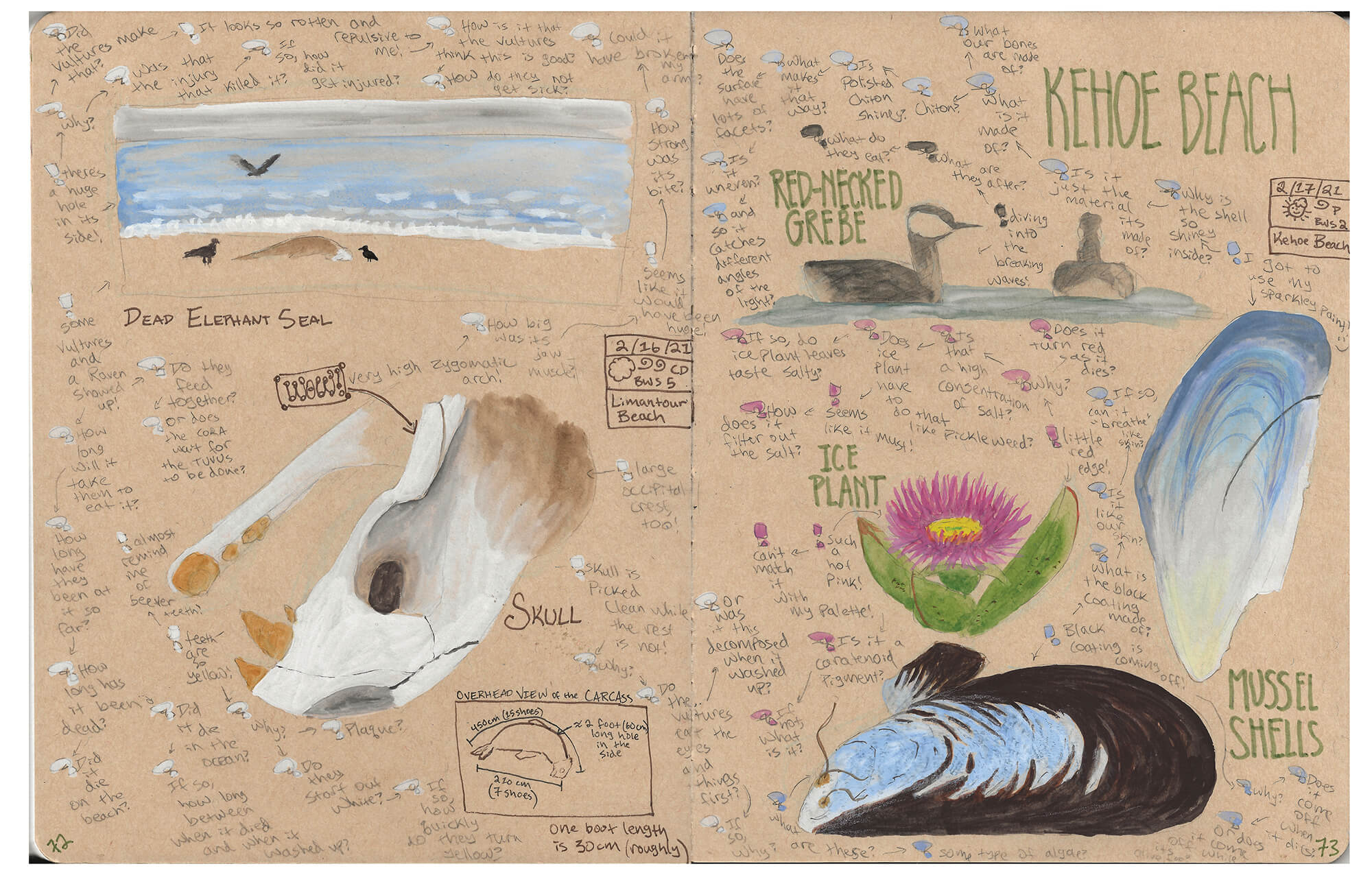
Fiona’s journal from Point Reyes National Seashore, February 2021.© Fiona Gillogly.
DRAWING IS A SKILL
People sometimes tell me that I have a talent for drawing. I would disagree. Drawing is not a gift that some are born with and others are not. It is a skill. If you practice, over time, your drawings will improve. A “growth mindset” is very important to journaling. If you believe you will improve with practice and if you put in the time practicing, you will get better. (Carol Dweck, author of Mindset: Changing The Way You Think To Fulfil Your Potential, is one of leading voices advocating this idea of a growth mindset.) Since I have been practicing drawing since about age 3, I have put in thousands of “pencil miles,” as my mentor, John Muir Laws, likes to call them. It is so inspiring for me to look back at some of my earlier work and see how far I’ve come. Even in a year, my drawings have become so much better. And because I have seen in my own work that practice leads to improvement, I know that if I keep drawing, my drawings will be even better a year from now. There is no point at which I will become a “good” artist. I am always growing and learning, and I will continue to do so as long as I am outside and exploring and observing this extraordinary world around me.
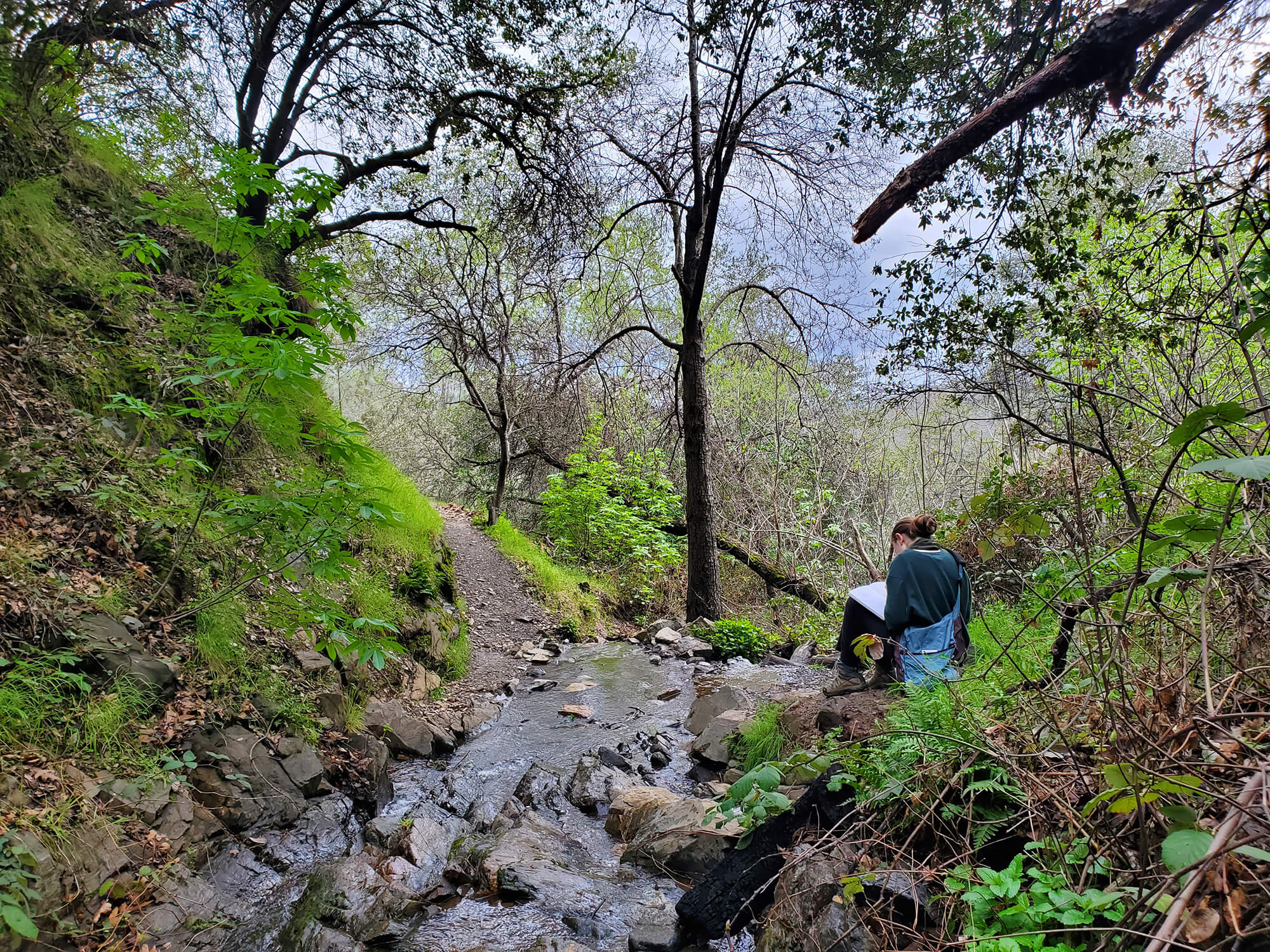
Fiona nature journaling at a creek near her home.
YOU CAN DO THIS, TOO!
Next time you are heading out into nature, I encourage you to bring a notebook and a pencil along. Find something that makes you stop in wonder or in awe and give it a little sketch, write down a few things you notice or something that surprised you, and jot down a couple of questions. Then, when you look back on that page, you will be able to remember your experience in nature so much more vividly.
As my mentor, John Muir Laws, says: “Love is sustained, compassionate attention.” When we give this kind of compassionate attention to the natural world, we fall in love with it. Nature journaling is one of the most powerful ways to fall in love with the natural world. And when we fall in love with the natural world, we are much more likely to protect it.
RESOURCES: For lots of free resources to help you (or your children) get started nature journaling, including free lesson plan downloads and hundreds of hours of video tutorials, visit johnmuirlaws.com.
1 Comment
Submit a Comment
The Natural Art of Seeing, Richard Louv
March 2021 Children & Nature Network Research Digest: Nature & Art
Nature journaling with johnmuirlaws.com
-
Network News
Earth Day: Young leaders advocate for change
-
Feature
Nature photographer Dudley Edmondson has a vision for the representation of Black and Brown faces in the outdoors
-
Richard Louv
EARTH MONTH: You're part of the New Nature Movement if....
-
Voices
Placemaking: How to build kinship and inclusive park spaces for children with disabilities
-
Network News
Children & Nature Network founders release report on global factors influencing the children and nature movement


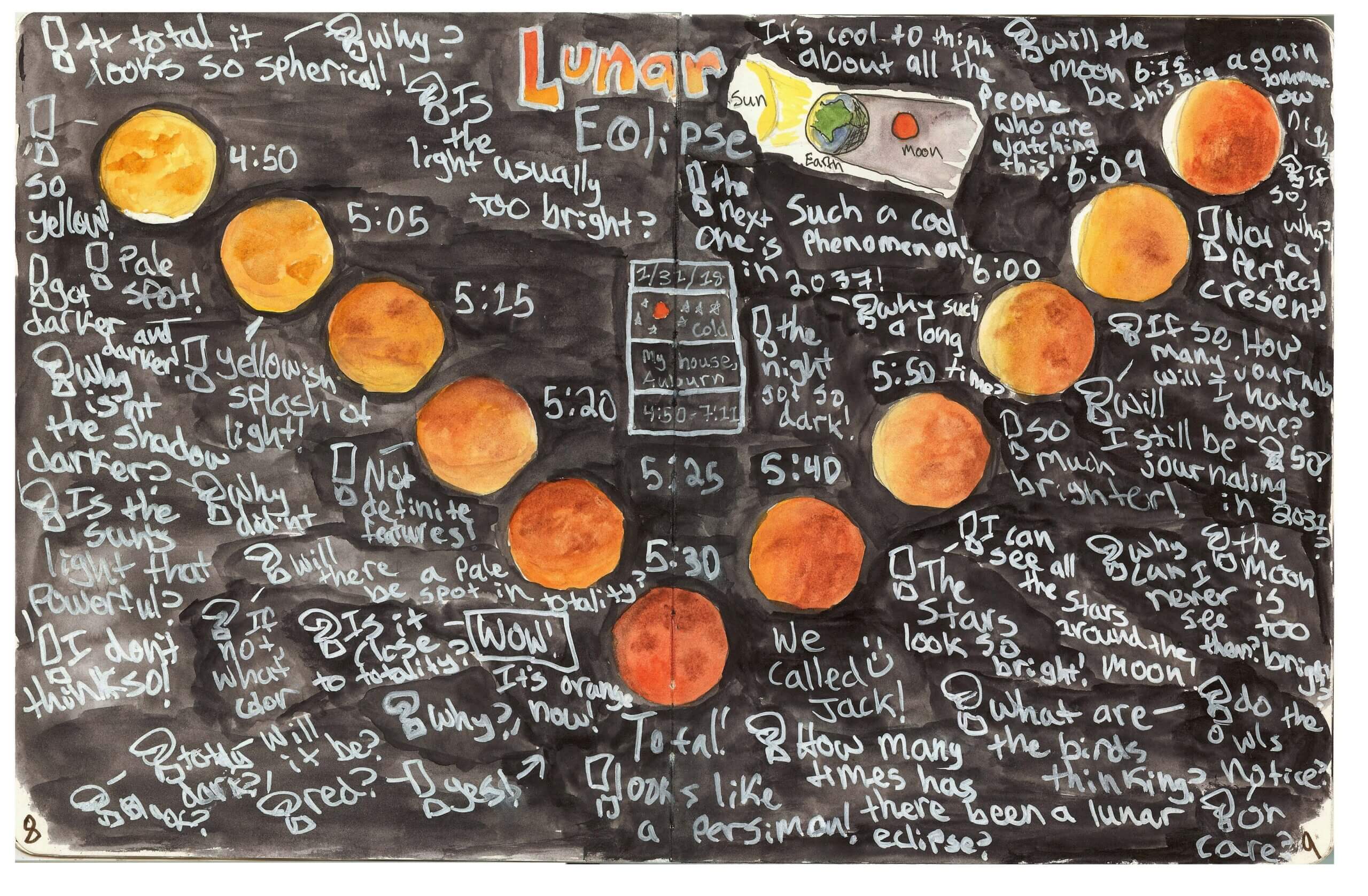
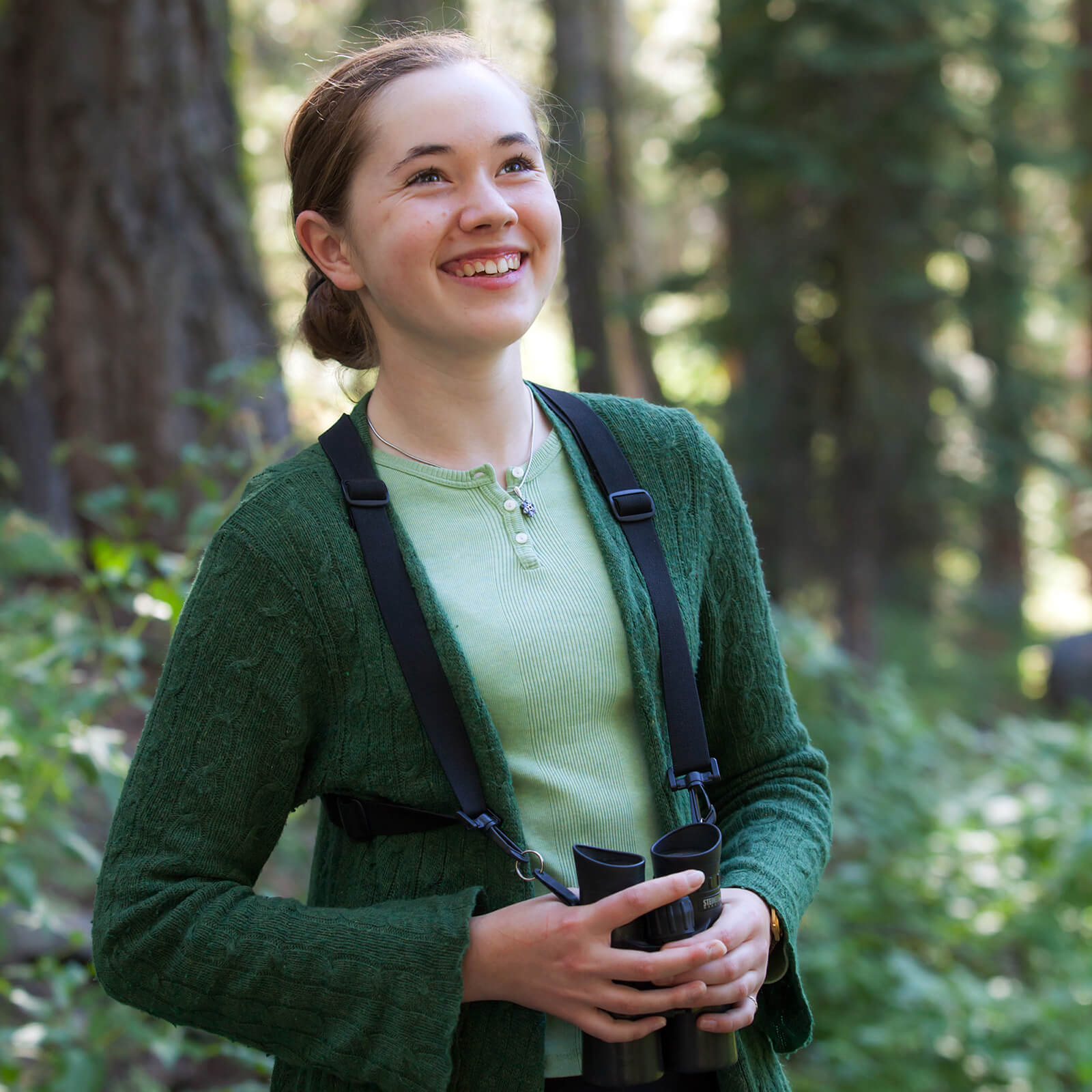
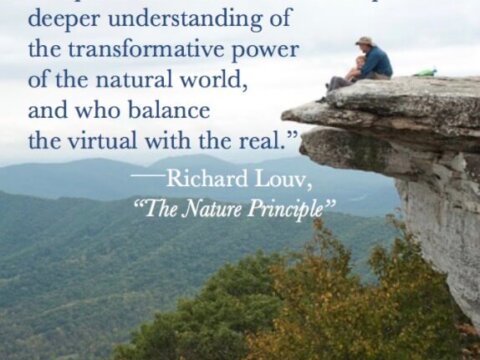
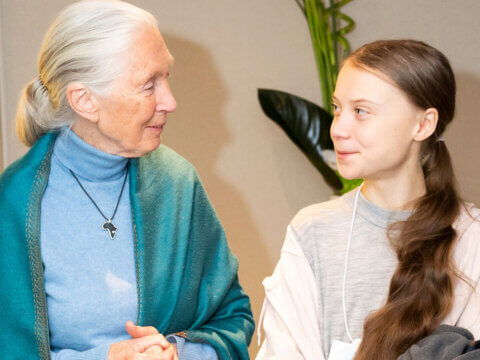
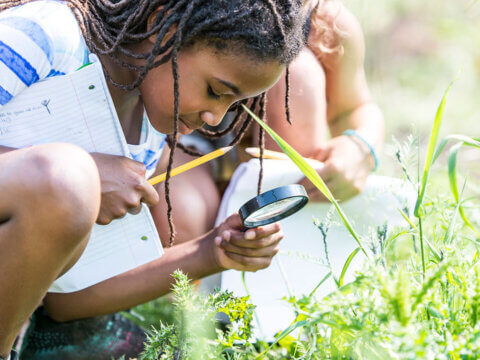
I love this article so much!! Thank you for sharing your sweet spirit, your love of nature and the way you do your nature journaling. I wish every kid could see this. It is even better that you are young yourself and that you started at a young age. This inspires fun, curiosity and a new way of looking at journaling- especially when it starts as an assignment. I bet other kids will come to love nature journaling because of you!